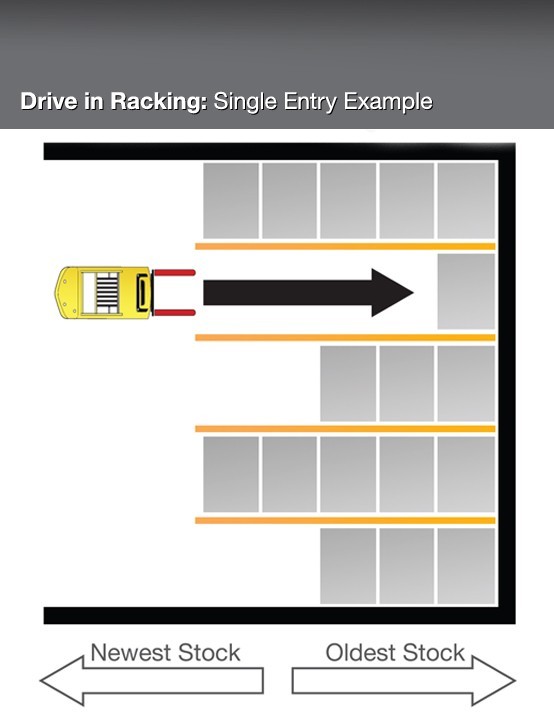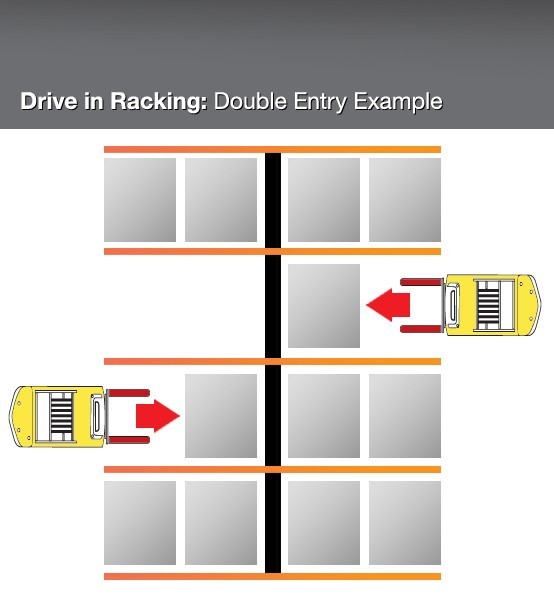What is Drive-In Racking? Warehouse Racking Guide: Part 4
What is drive-in racking? With drive-in racking, pallets are placed so they can slide backwards on a rail, thus storing them more deeply and creating more space in the warehouse. Drive-In Racking involves the forklift entering the racking from one side to load or retrieve the pallets which are stored more deeply.
Types of Drive-In Racking
Single entry racks involve racks that have forklift access to one side only.

Double entry racks involve racks where forklifts can access both sides of the racking structure. A row of the racks at the centre of this structure is held in place by a large beam.

When should you use Drive-In Racking?
- If you have products that need cold/freezer type storage.
- If you have large amounts of similar products and a limited space then drive-in racking is probably your best option when it comes to storage.
- If you have fragile product loads which cannot be stored in block stacks.
What are the advantages of Drive-In Racking?
- Freezer or cold storage can be expensive therefore organisations will want to store as many products in as limited space as possible.
- If you have numerous pallets of a similar product, drive-in racking creates more efficient use of space in a warehouse instead of selective type racking where there are many aisles with spaces in between to account for access of a forklift.
What are the disadvantages of Drive-In Racking?
- For one, these racks are more open to misuse, so it’s important that the rack is strong and reliable in order to last.
- Second is the Last In First Out (LIFO) aspect of racking; where the last and newest/fresh product will replace the older products at the front of the racking row; therefore old products will not be used before new products are added.